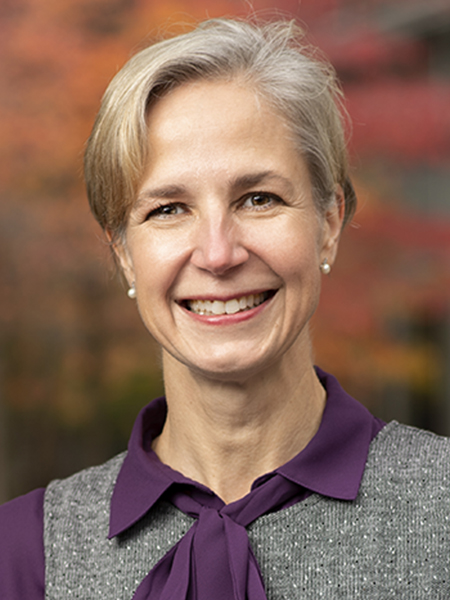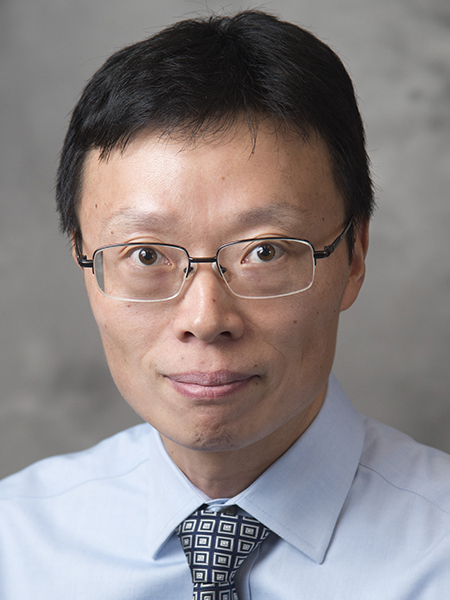AAE professors part of multi-university team selected for NASA ULI grant

AAE professors will help develop a theory and concept of operations that could be used by the Advanced Air Mobility community as part of NASA’s University Leadership Initiative (ULI).
The University of Texas at Austin is the lead on the project, one of five chosen by NASA to explore innovations in areas of aeronautical research. The four-year, $8-million grant includes researchers from Purdue, the Massachusetts Institute of Technology, Morgan State University and Cavan Solutions. AAE Professor Karen Marais is the Purdue PI on the project and Dengfeng Sun, an associate professor in AAE, is a team member.

The team will develop methods that could be used to validate the cost and scalability of conceptual autonomous cargo operations for all types of vehicles, from large unmanned cargo aircraft crossing the U.S. to the single drone that can drop a package in residential neighborhoods, according to a press release from UT Austin.
The COVID-19 pandemic has done more than increase demand for home deliveries, it has “changed the way supply chains are being strained,” said John-Paul Clarke, a professor in UT Austin’s Cockrell School of Engineering and co-principal investigator on the study.
“Suddenly, we must account for the risk associated with the drive of a truck on her way to a town or city where the virus is rampant. Autonomous aerial vehicles can provide us with greater flexibility to avoid putting workers at risk,” Clarke said in the release.
Marais and Sun will be involved in separate thrusts of the project.
Marais will focus on the portion of the project that works to systematically account for the factors that may impede public acceptance of unmanned aerial systems (UAS) and scalable growth in Advanced Air Mobility. Those factors include the audial and visual footprints, privacy concerns due to close proximity and frequent operations, and the perceived risks of autonomous operations.
To that end, Marais will be helping the team create methods to determine where operation is not possible (such as restricted airspace) or not desired (due to noise and privacy concerns) and where operation is desired (where payloads must be picked up or delivered).
Marais will focus on creating the risk, privacy and utility surfaces. She will intersect utility surfaces with surfaces, such as noise, created by the other team members to create “can-fly” zones where UAS may fly — provided they meet specific noise, communications and performance requirements — and “need-to-fly” zones where UAS are needed to deliver goods. The intersection between the can-fly and need-to-fly surfaces defines the feasible route space.
“One of the great features of our approach is that it combines different fields, such as noise modelling and market analysis, to create solutions that are not only physically feasible but also socially acceptable and financially viable,” Marais said.

Sun’s focus is the thrust that targets optimizing autonomous aerial cargo operations. Experiments will be conducted at Purdue to demonstrate proposed advances at multiple scales on hardware, focusing on academic-scale demonstrations of the enabling functionality.
“I am very excited to have the opportunity to work with Karen and collaborators from several other institutions on this project,” Sun said. “I look forward to being part of the team to create an autonomous air cargo system for people and goods to move from origin to destination in a seamless and affordable way.”
One key element to the ULI is education strategy that targets students from underrepresented groups. The team will contribute to a program under development between Purdue University and Morgan State University (an HBCU) by providing summer research projects at each university associated with the ULI.
“This ULI partnership with Morgan State further tightens the bond that was first established by the Base 11 project,” Marais said. “We are particularly excited about the research opportunities this ULI will provide Morgan State University students at Purdue, UT Austin and MIT.”
Also among the ULI’s fourth round of selections in 2021 was the first Purdue-led team. AAE Professor Timothee Pourpoint is the project’s principal investigator, and the group also includes Purdue mechanical engineering professors Christopher Goldenstein, Robert Lucht and Terrence Meyer, all of whom hold joint or courtesy appointments in AAE. Purdue researchers were team members in a North Carolina AT&T-led ULI selected in 2020.
